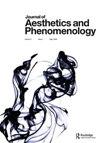Terror at the Heart of Sleep – Night Terrors, Nancy, and Phenomenology
IF 0.2
0 PHILOSOPHY
引用次数: 0
Abstract
ABSTRACT Sleep is soothing, silent, and serene, until it is not. Sleep is often troubled, disturbed, or even “disordered” as the medical literature describes it. This paper begins from an extreme form of such disturbance—terrified sleep. Night terrors (pavor nocturnus), in which sleep is violently interrupted, offer important insights into sleep and the methods by which it is studied. The sanitising nature of the medical classification of night terrors as part of a continuum with sleepwalking and yet strikingly distinct from nightmares, leads us into the arms of a more traditional, first-person, phenomenological investigation of night terrors. Without denying the power of both approaches, this paper offers a deconstructive alternative reading of this troubling of sleep through Jean-Luc Nancy’s rethinking of the body, its suffering and materiality. Nancy, and Derrida, help us tarry with the body terrified and trembling in night terrors. First the paper explores the medical incisions within sleep that carve out night terrors, as a delimited phenomenon. This is followed by a consideration of what phenomenology can, and crucially cannot, add to our understanding of night terrors. Next a deconstructive critique of the phenomenological concepts of Leib and Körper is utilised to return to the material body gripped by the night terror. This in turn leads to an alternative account of this parasomnia through a post-Nancean phenomenology of terror as distinct from fear and Angst. The paper closes by drawing out several conclusions about the body, sleep, and phenomenology’s limits when approaching the somnolent.睡眠中的恐惧——夜惊、南希与现象学
摘要睡眠是舒缓的、安静的、宁静的,直到它不再。正如医学文献所描述的那样,睡眠经常受到困扰、干扰,甚至“紊乱”。本文从这种干扰的一种极端形式——恐惧睡眠开始。夜惊(pavor-nocturnus)是指睡眠被剧烈打断,它为睡眠及其研究方法提供了重要的见解。夜惊医学分类的净化性质是梦游的一部分,但又与噩梦截然不同,这使我们进入了对夜惊的更传统的、第一人称的现象学研究的怀抱。在不否认这两种方法的力量的情况下,本文通过让-吕克·南希对身体、其痛苦和物质性的重新思考,对睡眠的这种困扰提供了一种解构性的替代解读。南希和德里达帮助我们,让我们的身体在夜惊中战栗。首先,本文探讨了睡眠中的医学切口,将夜惊作为一种限定的现象。接下来是对现象学可以,也至关重要的是不能,增加我们对夜惊的理解的思考。接下来,对Leib和Körper的现象学概念进行解构性批判,以回归被夜晚恐怖所笼罩的物质身体。这反过来又通过后南洋时代的恐怖现象学(与恐惧和安格斯特不同),引出了对这种准omnia的另一种解释。文章最后得出了几个关于身体、睡眠和现象学在接近嗜睡时的局限性的结论。
本文章由计算机程序翻译,如有差异,请以英文原文为准。
求助全文
约1分钟内获得全文
求助全文

 求助内容:
求助内容: 应助结果提醒方式:
应助结果提醒方式:


